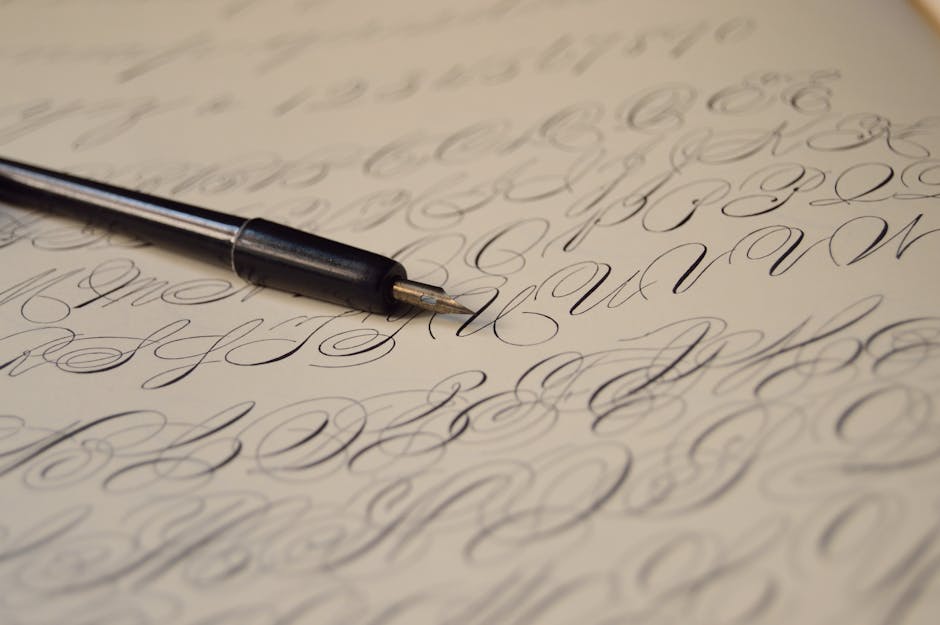Best Arabic Fonts Free Download

Finding the right Arabic font can be tough, especially when you’re looking for something that’s both beautiful and free to use. Whether you’re designing a website, creating marketing materials, or working on a personal project, the right font can make all the difference. As a graphic designer who’s worked with Arabic typography for years, I know the challenges firsthand. That’s why I’ve put together this guide to help you discover some of the best free Arabic fonts available.

Why Choosing the Right Arabic Font Matters
The Arabic script is known for its flowing, elegant curves and intricate details. The font you choose should reflect this beauty while also being easy to read. A poorly chosen font can make your text look unprofessional or even illegible, which is the last thing you want. Think of it like choosing the right outfit – you want something that looks good and fits the occasion.
Here’s what to consider:
- Readability: Can people easily read the text, especially at smaller sizes?
- Style: Does the font match the overall tone and message of your project? Is it modern, traditional, playful, or serious?
- Language Support: Does the font support all the Arabic characters you need, including any diacritics (those little marks above or below the letters)?
- Licensing: Is the font truly free to use, even for commercial projects? Always double-check the license!
Keeping these points in mind will guide you to the perfect font.
Top Free Arabic Fonts for Your Projects
Now, let’s get to the good stuff! Here are some of my favorite free Arabic fonts, with a bit about what makes them special:
Amiri
Amiri is a classic choice, designed to resemble the traditional Naskh style of Arabic calligraphy. It’s highly legible and works well for both body text and headings. It is a robust, reliable font suitable for various contexts, especially where clear communication is key.
Scheherazade
Scheherazade is another excellent option inspired by traditional Arabic calligraphy. It has a slightly more formal feel than Amiri, making it a good choice for projects that need a touch of elegance. The flow of the characters in this font delivers a certain sophistication to your content.
Reem Kufi
Reem Kufi is a modern take on the Kufic style, one of the oldest forms of Arabic script. It’s bold and geometric, making it ideal for headlines and display text. Its unique visual appearance adds a distinctive edge.
Droid Arabic Kufi
Developed by Google, Droid Arabic Kufi is designed for clarity on screens. It’s a great choice for websites and mobile apps, especially if you need a font that looks good on different devices. You can almost always rely on this one for digital projects.
Lateef
Lateef is a versatile font that works well for both headlines and body text. It has a clean, modern design that makes it easy to read. I’ve found it particularly useful when I needed a contemporary look without sacrificing clarity.
Cairo
Cairo is a geometric sans-serif font that provides a friendly and modern aesthetic. Its rounded letterforms give it a warm, approachable feel. Cairo’s balanced design makes it adaptable to both print and digital mediums.
Harmattan
Harmattan is designed for use in West African languages that use the Arabic script. It’s a clear and legible font that works well in a variety of contexts. If you’re working with these languages, Harmattan is a must-have.
Where to Find These Free Fonts
You can typically find these fonts on websites like Google Fonts, Font Squirrel, and other reputable font repositories. Always make sure to download fonts from trusted sources to avoid getting malware or fonts with unclear licensing terms. A quick search on “Google Fonts Arabic” will take you to a treasure trove of options.
Tips for Using Arabic Fonts Effectively
Here are a few pointers to ensure your designs shine:
- Contrast is Key: Pair your Arabic font with a complementary Latin font for a visually appealing look if your design includes both scripts.
- Mind the Spacing: Arabic script can sometimes appear cramped, so pay attention to letter spacing and line height. Adjusting these settings can significantly improve readability.
- Test, Test, Test: Always test your font choices on different devices and in different sizes to make sure they look good everywhere.
- Consider Cultural Context: Be mindful of the cultural implications of your font choice. A font that’s appropriate for one context might not be for another.
These tips will help you maximize the impact of your Arabic font choices.
Common Mistakes to Avoid
Even experienced designers sometimes make these mistakes. Keep these in mind:
- Using Illegible Fonts: Avoid fonts that are too decorative or stylized, especially for body text. Readability should always be your top priority.
- Ignoring Licensing: Always read the license agreement before using a font, even if it’s labeled as “free.” Some fonts are only free for personal use.
- Assuming All Fonts Support All Characters: Not all Arabic fonts support all the characters and diacritics you might need. Always test the font to make sure it includes everything you need.
Frequently Asked Questions
Can I use these fonts for commercial projects?
It depends on the font! Always check the license agreement. Most fonts on Google Fonts are free for commercial use, but it’s essential to confirm.
How do I install Arabic fonts on my computer?
On Windows, right-click the font file and select “Install.” On macOS, double-click the font file and click “Install Font” in the Font Book application.
What if a font doesn’t support all the Arabic characters I need?
You might need to find a different font or use a font editor to add the missing characters (this is a more advanced technique).
Are there any websites that can help me pair Arabic fonts with Latin fonts?
While there aren’t specific websites dedicated to this, exploring design blogs and typography resources can offer inspiration. Experimenting yourself is also a great way to learn!
Choosing the right Arabic font can seem daunting, but with a little research and experimentation, you can find the perfect font for your project. Remember to prioritize readability, consider the style of your project, and always double-check the licensing terms. Happy designing!



